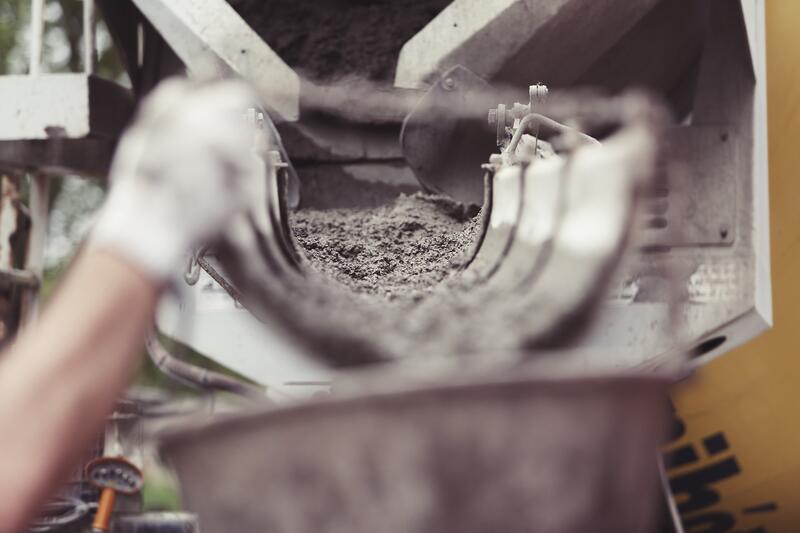Paving the Way for Carbon-Free Manufacture of articles of concrete, cement and plaster
New research shows that a carbon-free method for producing articles of concrete, cement, and plaster could be possible, paving the way for a more sustainable construction industry.

What is Decarbonisation in "Manufacture of Articles of Concrete, Cement and Plaster" Sector and Why is it Important?
Decarbonisation is the process of reducing or eliminating carbon emissions from the production and use of goods and services. In the manufacture of articles of concrete, cement and plaster sector, decarbonisation involves reducing the carbon footprint of cement production, which is the primary material used in the manufacture of these articles. The importance of decarbonisation in this sector cannot be overstated. The manufacture of articles of concrete, cement and plaster sector is one of the most significant contributors to global carbon emissions. Decarbonisation is essential to mitigate the impact of climate change and meet the global targets set in the Paris Agreement.
What are the Main Sources of Carbon Emissions in "Manufacture of Articles of Concrete, Cement and Plaster" Sector?
The main sources of carbon emissions in the manufacture of articles of concrete, cement and plaster sector are the production of cement and the use of fossil fuels in the manufacturing process. The production of cement involves the calcination of limestone, which releases large amounts of CO2 into the atmosphere. The use of fossil fuels in the manufacturing process, such as coal and natural gas, also contributes to carbon emissions. Additionally, transportation of raw materials and finished products also contributes to carbon emissions.
How Can We Reduce Carbon Emissions in "Manufacture of Articles of Concrete, Cement and Plaster" Sector?
Reducing carbon emissions in the manufacture of articles of concrete, cement and plaster sector is a complex process that requires a combination of strategies. Some of the strategies that can be employed include:
- Use of Alternative Materials: The use of alternative materials such as fly ash, slag, and pozzolana can reduce the amount of cement needed in the manufacturing process, thereby reducing carbon emissions.
- Use of Renewable Energy: The use of renewable energy such as solar and wind power can reduce the use of fossil fuels in the manufacturing process, thereby reducing carbon emissions.
- Carbon Capture and Storage: Carbon capture and storage (CCS) involves capturing CO2 emissions from the manufacturing process and storing them in underground geological formations. CCS can significantly reduce carbon emissions in the manufacturing process.
- Energy Efficiency: Improving energy efficiency in the manufacturing process can reduce the amount of energy needed to produce cement, thereby reducing carbon emissions.
- Transportation Efficiency: Improving transportation efficiency by using more efficient modes of transportation and reducing transportation distances can reduce carbon emissions.
What are the Challenges Facing Decarbonisation in "Manufacture of Articles of Concrete, Cement and Plaster" Sector?
Decarbonisation in the manufacture of articles of concrete, cement and plaster sector faces several challenges. Some of the challenges include:
- Cost: Many of the strategies for decarbonisation, such as CCS and the use of renewable energy, are costly and may require significant investments.
- Technical Challenges: Some of the strategies for decarbonisation, such as the use of alternative materials, may require significant changes to the manufacturing process, which may be technically challenging.
- Regulatory Challenges: The manufacture of articles of concrete, cement and plaster sector is subject to various regulations, which may hinder the adoption of decarbonisation strategies.
- Lack of Awareness: Many stakeholders in the sector may not be aware of the importance of decarbonisation or the strategies that can be employed to reduce carbon emissions.
What are the Implications of Decarbonisation for "Manufacture of Articles of Concrete, Cement and Plaster" Sector?
Decarbonisation in the manufacture of articles of concrete, cement and plaster sector has significant implications for the sector. Some of the implications include:
- Increased Efficiency: Decarbonisation strategies such as improving energy efficiency and transportation efficiency can increase the efficiency of the manufacturing process, which can lead to cost savings and increased competitiveness.
- Improved Sustainability: Decarbonisation can improve the sustainability of the manufacturing process, which can enhance the reputation of the sector and attract environmentally conscious consumers.
- Regulatory Compliance: Decarbonisation can help the sector comply with various regulations related to carbon emissions, which can reduce the risk of penalties and reputational damage.
- Innovation: Decarbonisation can drive innovation in the sector, leading to the development of new technologies and processes that can enhance the competitiveness of the sector.
Conclusion
Decarbonisation in the manufacture of articles of concrete, cement and plaster sector is essential to mitigate the impact of climate change and meet the global targets set in the Paris Agreement. The main sources of carbon emissions in the sector are the production of cement and the use of fossil fuels in the manufacturing process. Strategies for reducing carbon emissions in the sector include the use of alternative materials, renewable energy, carbon capture and storage, energy efficiency, and transportation efficiency. Decarbonisation faces several challenges, including cost, technical challenges, regulatory challenges, and lack of awareness. Decarbonisation has significant implications for the sector, including increased efficiency, improved sustainability, regulatory compliance, and innovation. The sector must embrace decarbonisation to remain competitive and contribute to the global effort to mitigate the impact of climate change.